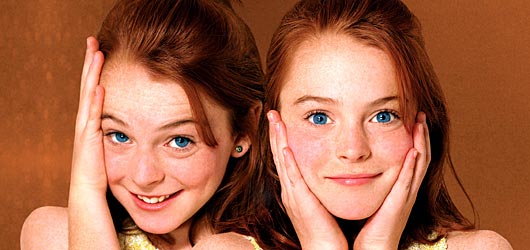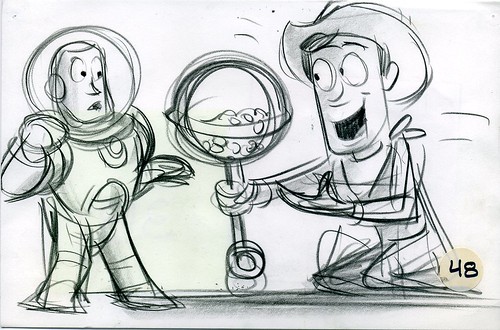
It's a parents dream: for the low low price of $9.95, you can guarantee your attention span-less child will stay put in a single spot for an uncharacteristically extended period of time. Heck, parents would probably pay upwards of $100 for results like these, so those Scholastic people are really cutting them a deal on this one. Writer Jean Marzollo and photographer Walter Wick are probably laughing all the way to their interestingly cluttered homes full of cleverly arranged tough-to-spot ornamental and thematic objects.
Following in the well-hidden footsteps of Where's Waldo, Scholastic's series of I SPY books offered a handily portable search game certain to provide children with endless hours of contemplation and entertainment. Each page was its own magical little world of plentiful well-placed objects, usually within some sort of thematic framework. The pages themselves were visually impressive enough to enthrall children of any age, while the clever written riddlers were at times enough to stump any parents reading along.

These books were full of imagination and wonder, which generally translated into them being simultaneously mesmerizing and frustrating. Sure, the pictures were hypnotizing in their high level of visual interest, but they also gave our poor little eyes stare-at-an-eclipse level strain. It's a wonder we weren't all marveling over these books stooped over with Quasimodo-esque posture donning granny glasses dangling from a chain. If anything had the power to age us prematurely, it was these damn visual puzzlers.
We all started off pretty cocky. They'd throw a few easy search assignments at you to build your confidence in typical 90s rah-rah self-esteem style. Some of the clues were completely straightforward, as least in theory. In practice, we were required to actually locate these objects amidst a sea of unimportant junk. Just when we thought we'd finally conquered these perplexing puzzles, we'd get to one that had some sort of riddle. Oh, great, so now we have to think, too? What is this, The Eleventh Hour? And no secret solution in the back? For shame.
The pictures themselves were an impressive feat alone. Where exactly were they getting all of this stuff? I've been to plenty of garage sales and swap meets, but I've never managed to accumulate this volume of junk. How could they possibly track down so many button, marbles, manacala beads, and checkers to artfully arrange in a chaotically ordered manner?
And what sort of mixed messages were these sending children? Our parents say "Clean your room," and then offer us a book full of vast quantities of object in complete disarray? I tried writing a poem to go with my messy room, but my parents weren't taken in by my I SPY-like effort. If only they'd solved that riddle, I'd perhaps have had the confidence to pursue my then-chosen career as a search picture book stanza composer. Plus, they could have found my stuffed manatee.
Despite these personal setbacks, I can still admire these books' intricacies. While most parents tired of reading the same books to their children over and over, the I SPY series provided both parents and their offspring with hundreds of new items to discover with each read. You even have the opportunity at some healthy competition in your race to locate all the listed objects. Just be prepared for the inevitable resultant tears when your overly competitive father shouts, "In your face!" repeatedly to celebrate his obviously unfair victory. Don't say I didn't warn you.
Parents also had the advantage of softening the blow of defeat on their younger, more fragile children (read: the illiterate. Well, they can't. But you get the point.) Many of them quickly realized that especially in a family where multiple ages of children played with this book, you could, ahem, adapt it for younger non-reading kids. In other words: lie. Lie, lie, lie. "Oh, what does all that writing say? It says, look for the big happy clown in the middle of the page! What's that? Found it already! What a smart little boy!"
 Try as I might, I was never able to recreate this scene with my own Tinker Toys. Perhaps it's because I didn't have a proper protractor and rainbow xylophone on hand.
Try as I might, I was never able to recreate this scene with my own Tinker Toys. Perhaps it's because I didn't have a proper protractor and rainbow xylophone on hand.In Scholastic's infinite wisdom (evidenced by their glorious, glorious book orders), they fashioned these books to be lightweight and highly portable. Translation: bring it in the car and maybe your children will shut the hell up on a long road trip. Without this type of legitimate distraction, who knows what dire lengths you'd have to go to to satiate your restless and irritable children. In my family, we were reduced to stopping off at a cemetery so us kids could run around. Unfortunately for my parents, from then on whenever my sister and I spotted a cemetery from the car, we would eagerly implore, "Play, play!" Honestly, we wouldv'e been much better off with an I SPY book. After all, it's far more difficult to disrespect the dead with one of those babies.
So for those of you with children who prefer not to engage in any type of sacrilege sure to anger someone upstairs, I'd highly recommend investing in one of these. And for those of you without children, my advice stands. Alright, so you may get some questionable looks when you whip out I SPY: Spooky Night on your subway trip home from your hours of enslavement to the man, but just imagine how excited you'll be when you finally locate that cross-eyed jack-o-latern.

























